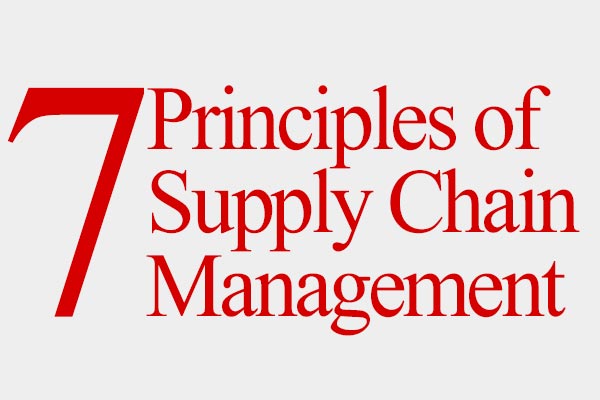U.S. National Blueprint for Transportation Decarbonization issued by four key government agencies
Last September, leadership at various United States government agencies—the Departments of Energy, Transportation, Housing and Urban Development, and the Environmental Protection Agency—inked a memorandum of understanding (MOU) geared towards the agencies coming together to “accelerate the nation’s affordable and equitable transportation future.”
The MOU’s chief objective was for the agencies to issue a comprehensive strategy for decarbonizing the transportation sector, in an effort to guide future policy decisions and also research, development, demonstration, and deployment, for both the public and private sectors, according to the Department of Energy’s Office of Energy & Renewable Energy (EERE).
This MOU was followed earlier this month by the agencies’ formal release of the U.S. National Blueprint for Transportation Decarbonization, which EERE described as a landmark interagency framework of strategies and actions to remove all emissions from the transportation sector by 2050, provides a “whole-of-government approach” to address the climate crisis and also meet the White House’s goal of having a 100% clean electrical grid by 2035 and net-zero carbon emissions by 2050.
“Transportation policy is inseparable from housing and energy policy, and transportation accounts for a major share of U.S. greenhouse gas emissions, so we must work together in an integrated way to confront the climate crisis,” said Pete Buttigieg Secretary, U.S. Department of Transportation, in the blueprint. “Every decision about transportation is also an opportunity to build a cleaner, healthier, more prosperous future. When our air is cleaner; when more people can get good-paying jobs; when everyone stays connected to the resources they need and the people they love, we are all better off.”
The blueprint highlighted how the transportation sector of the largest source of United States greenhouse gas emissions, being responsible for one-third of emissions in the country, coupled with transportation costs representing the second-largest household expense for Americans. What’s more, it pointed out that a decarbonized transportation system can mobilize a sustainable economy, and it also said that as the U.S. transportation system and communities are being increasingly threatened by worsening climate impacts, including hurricanes, wildfires, flooding, heatwaves, and drought, it views decarbonization as essential.
Some of the key decarbonization goals and objectives set forth in the blueprint include:
- reducing the national transportation cost burden by at least 5% by 2030;
- reduce aviation emissions by 20% when compared to a business-as-usual scenario;
- invest in research and transportation to further develop and demonstrate clean technologies necessary for a decarbonized transportation sector;
- build an equitable network of 500,000 EV chargers by 2030 to support EV adoption;
- ensure 100% of medium and heavy-duty vehicles are zero emissions by 2035;
- develop a robust workforce and supply chain solutions to ensure the U.S. can manufacture enough clean vehicles and fuels to meet rapidly growing demand and that the resulting jobs and economic opportunities are distributed equally;
- achieve 100% zero-emission medium- and heavy-duty vehicle sales by 2040 and ensure that 100% of all federal fleet vehicle acquisitions are zero-emissions vehicles by 2035;
- continue to scale up use of sustainable fuels for aviation and maritime; and
- support fleet turnover to fully replace legacy vehicles with clean zero-emission solutions and supply 100% of fuel demand with clean fuels, among others
Spencer Shute, Principal Consultant at Proxima, a Chicago-based strategic team of procurement specialists with more than 25 years of consultation and supply chain experience, said that the blueprint’s key message for supply chain, freight transportation, and logistics stakeholders is that decarbonizing the transportation sector will require multiple strategies and innovations.
“Narrowing the focus to what is classified as Medium and Heavy-Duty Vehicles (MHDV), which encompasses over the road transportation in supply chains, shows there is significant ground to be made in order to accomplish the targets set out in the blueprint,” he explained. “In order to continue meeting consumer demands and expectations, innovation and alternatives will need to be developed to replace today's infrastructure and equipment. While EV's are becoming more popular among consumers, technology hasn't advanced quickly enough to replace over the road trucks and maintain the same transit and lead times. Here is where innovation and alternative sources of energy come into the mix.”
And he added that just like a company evaluating supply chains holistically to achieve sustainable, long-term results, it is imperative that the entire chain of new alternative energy vehicles are evaluated.
“Measuring to verify emissions are not shifted upstream (i.e., mining of more raw materials) or downstream (i.e., multiple vehicles required to replace one vehicle, therefore driving additional resource demand) of any new alternative fuel vehicle is critical to achieving the overarching goals of the blueprint,” he said. “As new technology and resources become available, supply chain and logistics managers need to evaluate their current networks to ensure they are aligned for success. This includes understanding the lifecycle and maintenance plans for current equipment, budgeting for asset replacement and optimizing networks based on feasibility of resource availability.”
A supply chain stakeholder whom declined to be identified was not optimistic about the blueprint’s prospects, saying that the move to electrify automobiles requires an incredible amount of carbon expenditure to build vehicles and manufacture batteries.
“Add to that the fact that we do not have a practical way to recycle or dispose of the mounting number of lithium batteries being used and manufactured,” he said. “EV's don't last as long as conventional internal combustion cars, so look out in a couple of years, when the tsunami of obsolete EV's end up in the landfill. The report recognizes that 49% of vehicles are passenger cars, but they rely only on batteries for the future. While not currently available, more informed people than me have stated that renewables like hydrogen will be the real answer.”












